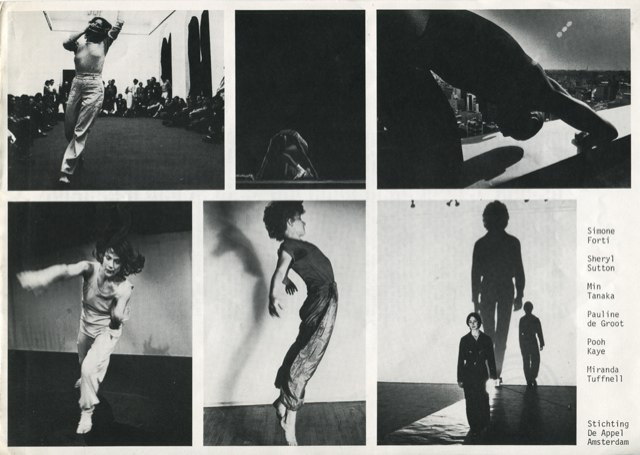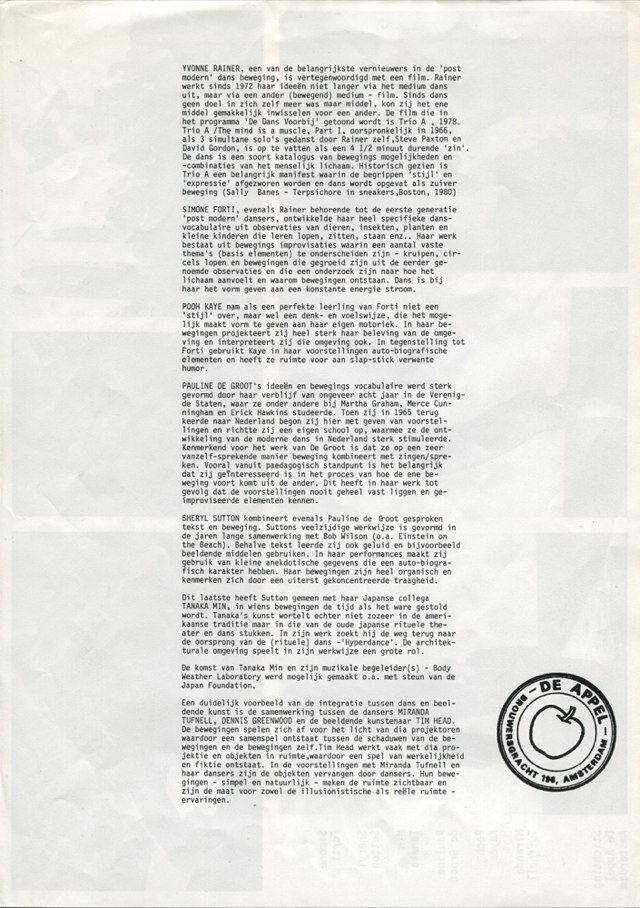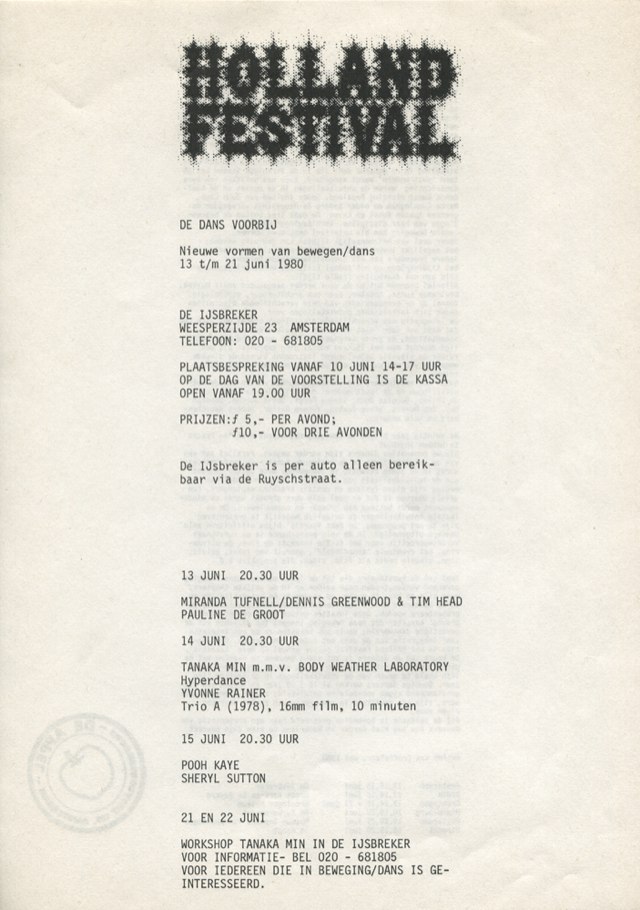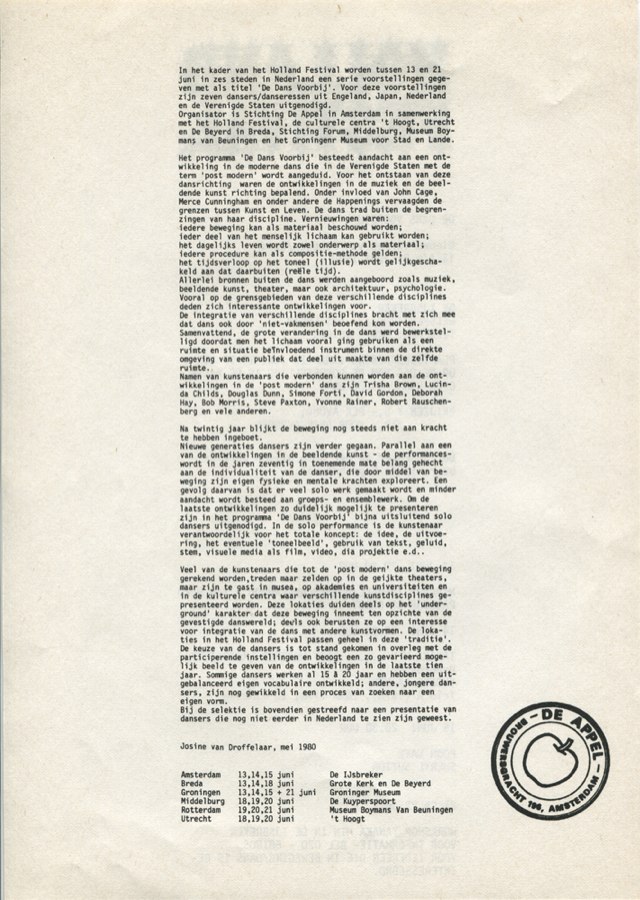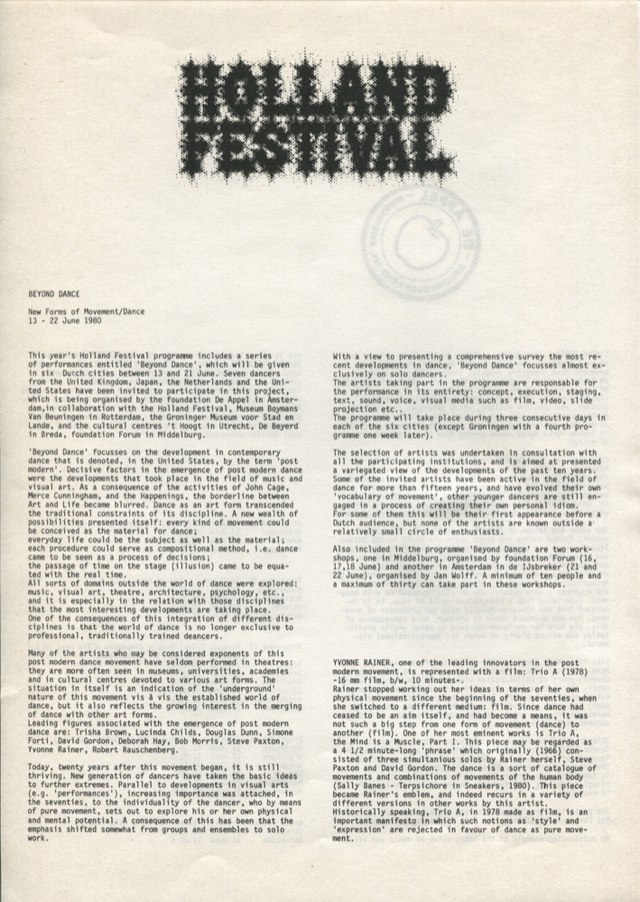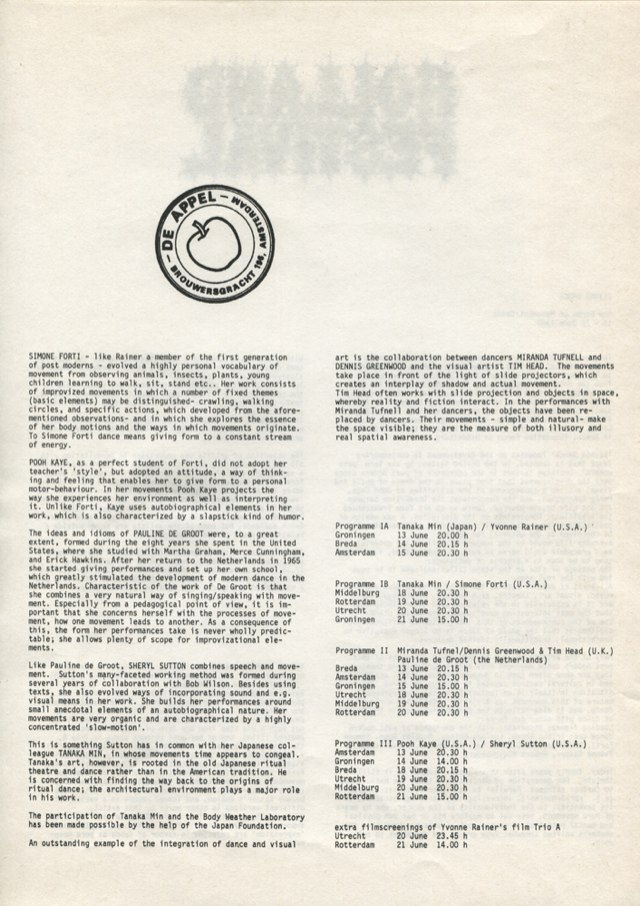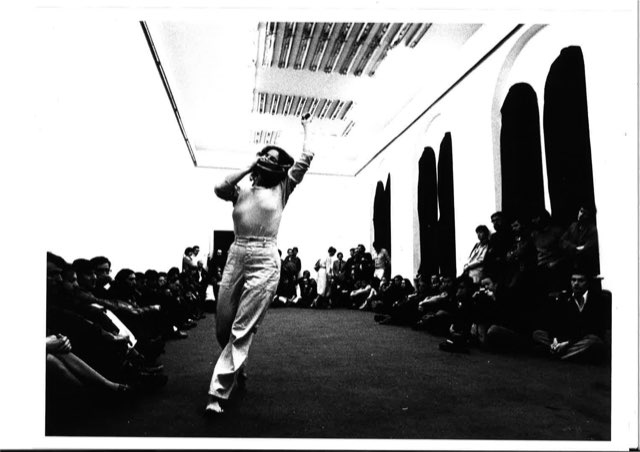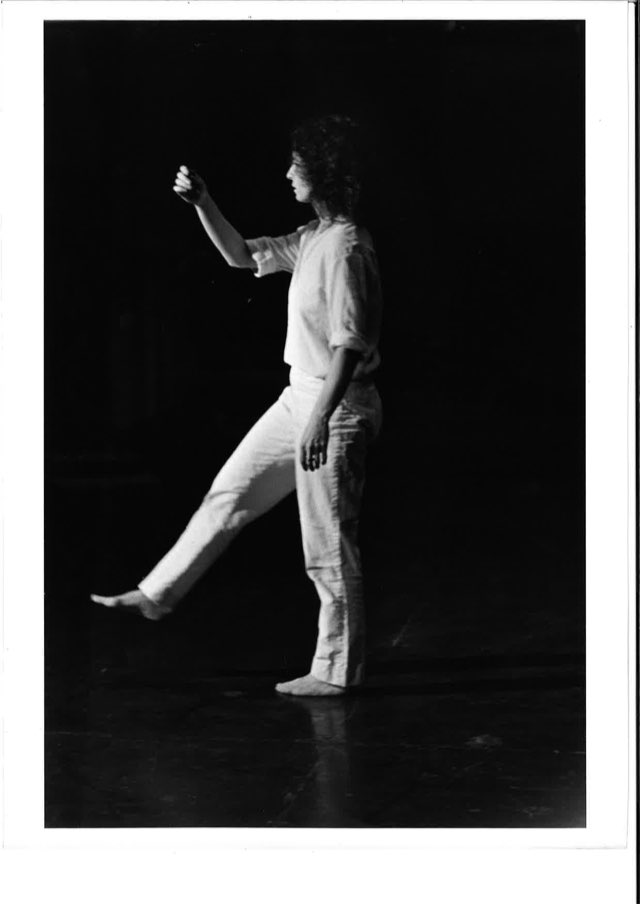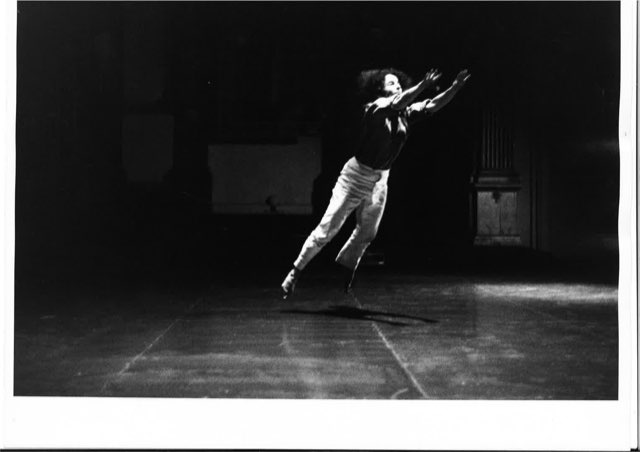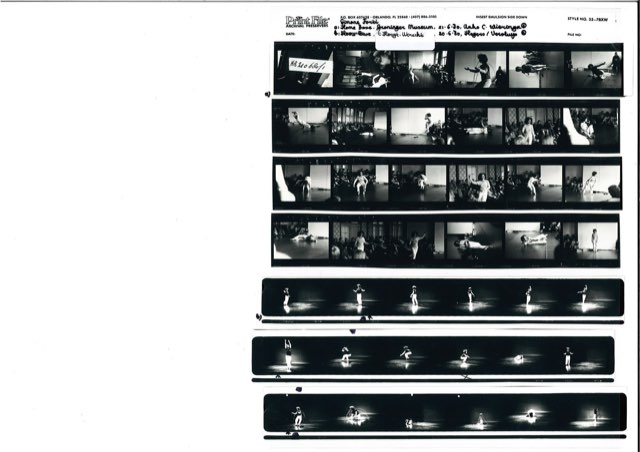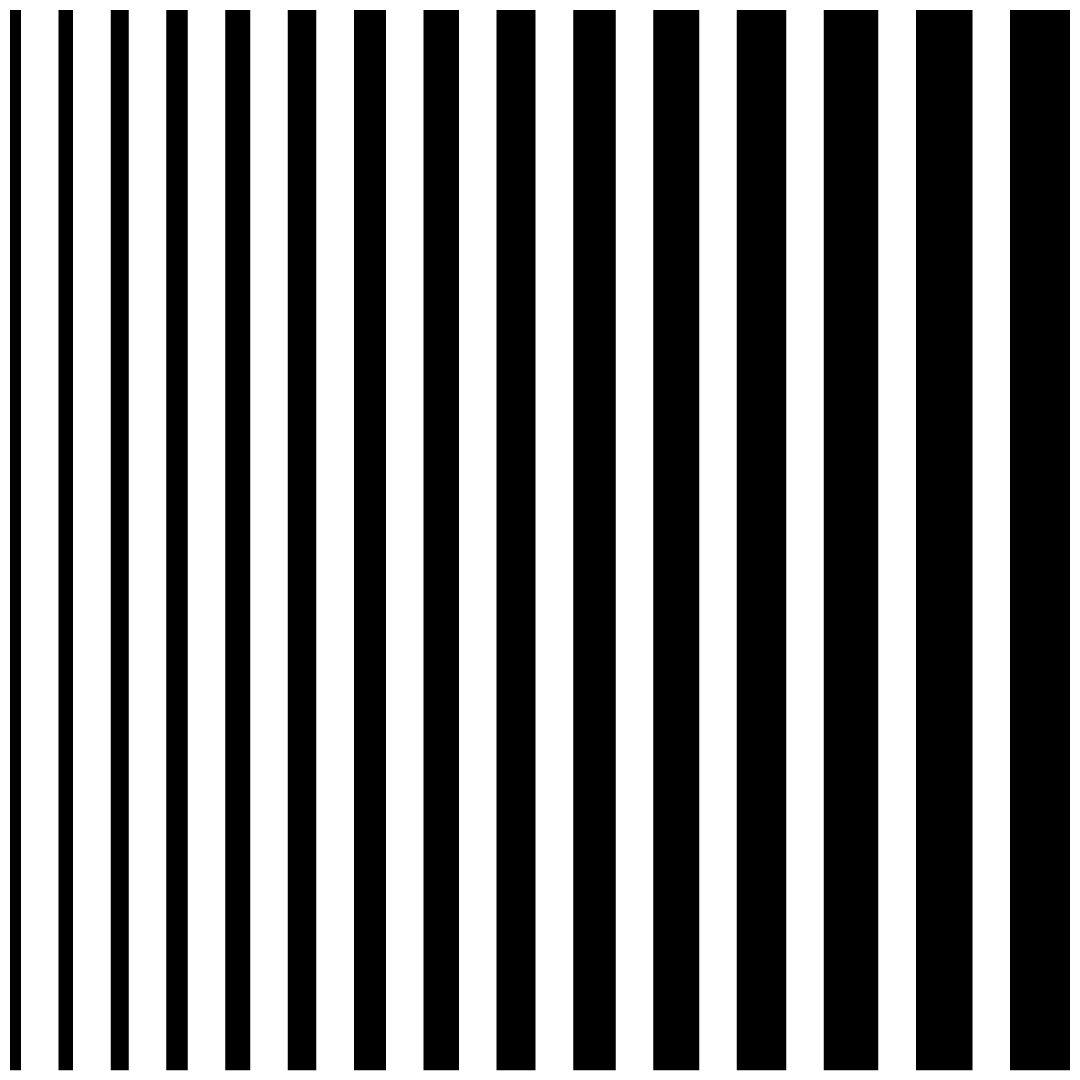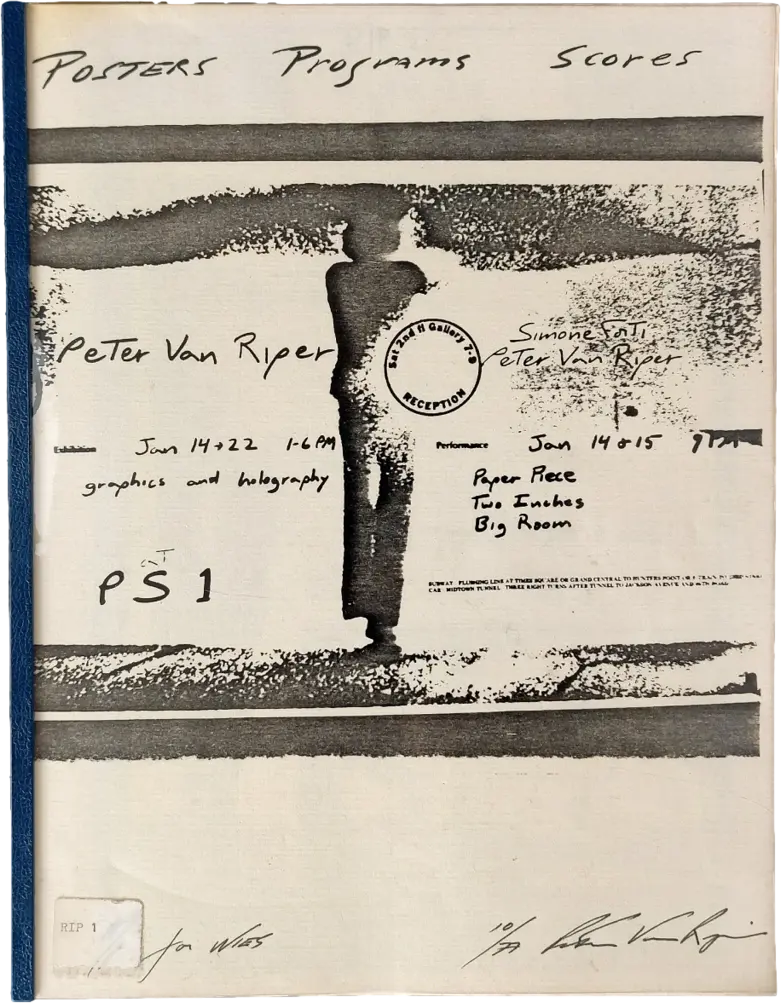De Dans Voorbij
13–22.06.1980
de Appel, Brouwersgracht 196, Amsterdam
de Appel, Brouwersgracht 196, Amsterdam
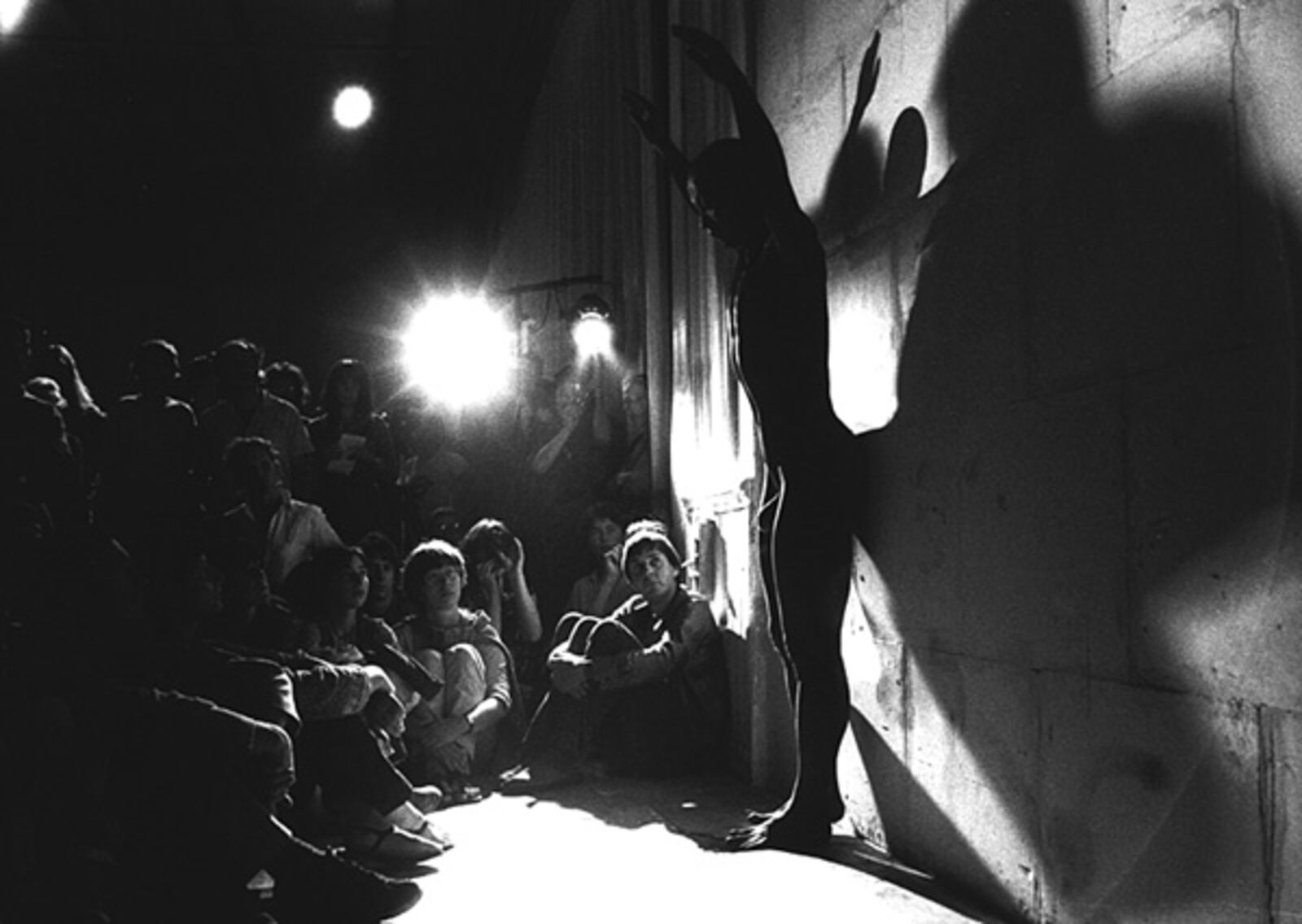
Min Tanaka (De IJsbreker, Amsterdam)
© Dennis Hogers / Rob Versluys, Amsterdam
© Dennis Hogers / Rob Versluys, Amsterdam
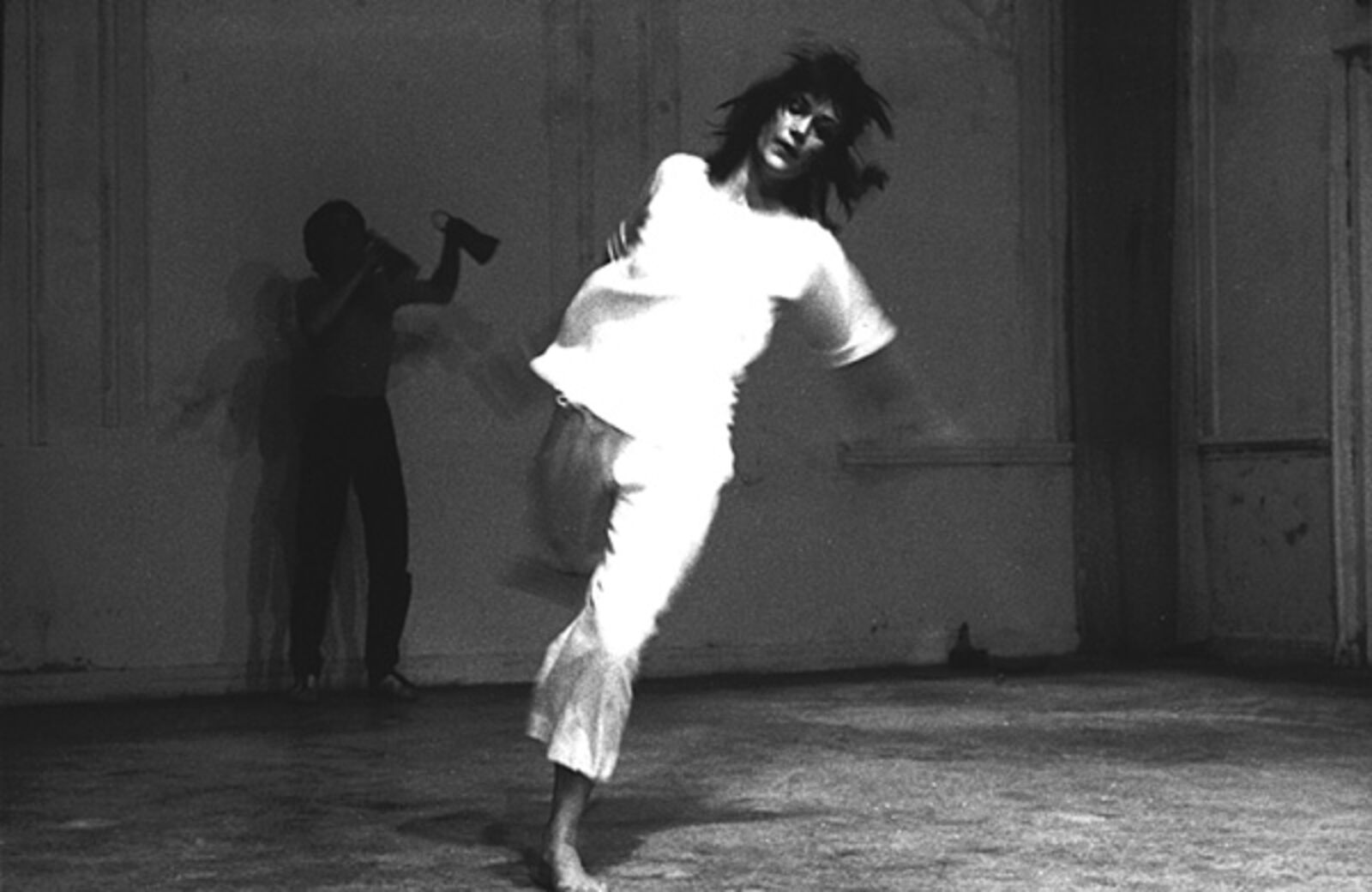
Pauline de Groot (De IJsbreker, Amsterdam)
© Dennis Hogers / Rob Versluys, Amsterdam
© Dennis Hogers / Rob Versluys, Amsterdam
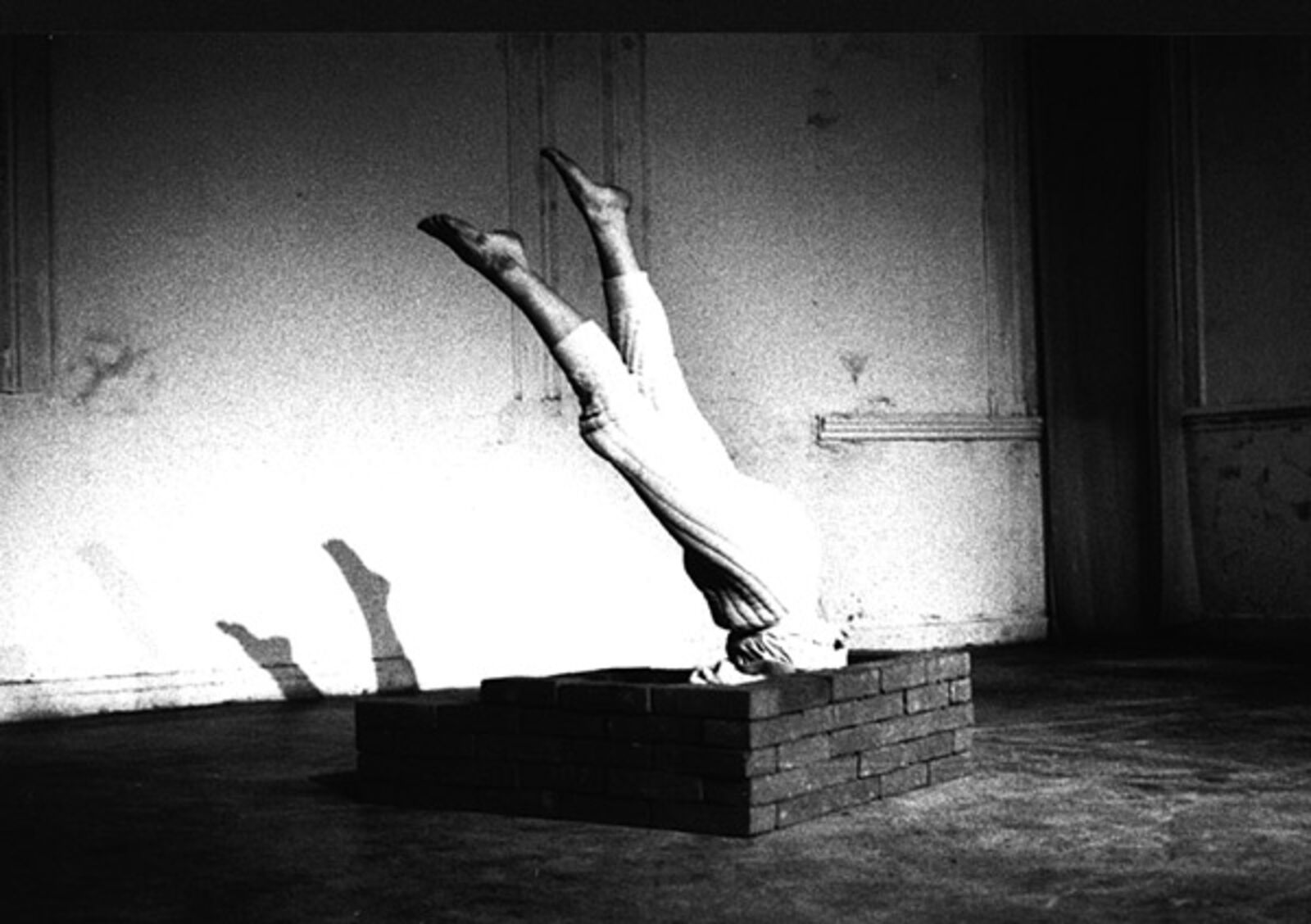
Pooh Kaye (De IJsbreker, Amsterdam)
© Dennis Hogers / Rob Versluys, Amsterdam
© Dennis Hogers / Rob Versluys, Amsterdam
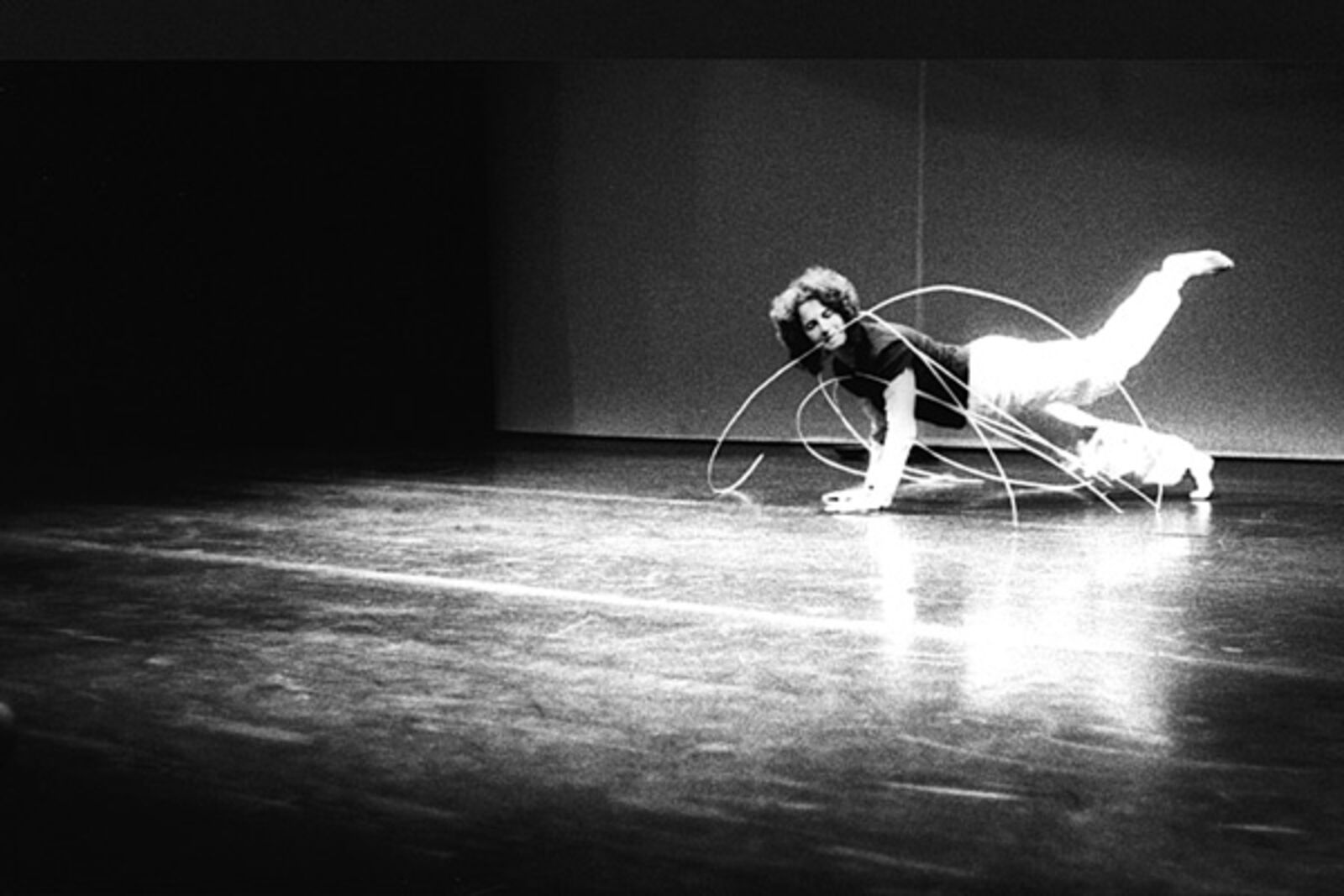
Simone Forti ('t Hoogt, Utrecht)
© Dennis Hogers / Rob Versluys, Amsterdam
© Dennis Hogers / Rob Versluys, Amsterdam

Sheryl Sutton (De IJsbreker, Amsterdam)
© Dennis Hogers / Rob Versluys, Amsterdam
© Dennis Hogers / Rob Versluys, Amsterdam

Miranda Tufnell, Dennis Greenwood & Tim Head (Boymans-Van Beuningen, Rotterdam)
© Dennis Hogers / Rob Versluys, Amsterdam
© Dennis Hogers / Rob Versluys, Amsterdam
‘This year's Holland Festival programme includes a series of performances entitled Beyond Dance, which will be given in six Dutch cities between 13 and 21 June. Seven [post modern] dancers from the United Kingdom, Japan, the Netherlands and the United States have been invited to participate in this project, which is being organised by the foundation De Appel in Amsterdam, in collaboration with the Holland Festival, Museum Boymans Van Beuningen in Rotterdam, the Groninger Museum voor Stad en Lande, and the cultural centres 't Hoogt in Utrecht, De Beyerd in Breda, foundation Forum in Middelburg.
‘Yvonne Rainer, one of the leading innovators in the post modern movement, is represented with a film: Trio A (1978) - 16 mm film, b/w, 10 minutes. Rainer stopped working out her ideas in terms of her own physical movement since the beginning of the seventies, when she switched to a different medium: film. Since dance had ceased to be an aim itself, and had become a means, it was not such a big step from one form of movement (dance) to another (film). One of her most eminent works is Trio A, the Mind is a Muscle, Part I. This piece may be regarded as a 4 1/2 minute-long 'phrase' which originally (1966) consisted of three simultaneous solos by Rainer herself, Steve Paxton and David Gordon. The dance is a sort of catalogue of movements and combinations of movements of the human body.’ (Sally Banes, Terpsichore in Sneakers, Boston 1980). This piece became Rainer's emblem, and indeed recurs in a variety of different versions in other works by this artist. Historically speaking, Trio A, in 1978 made as film, is an important manifesto in which such notions as 'style' and 'expression' are rejected in favour of dance as pure movement.
Simone Forti - like Rainer a member of the first generation of post moderns - evolved a highly personal vocabulary of movement from observing animals, insects, plants, young children learning to walk, sit, stand etc.. Her work consists of improvized movements in which a number of fixed themes (basic elements) may be distinguished - crawling, walking circles, and specific actions, which developed from the aforementioned observations - and in which she explores the essence of her body motions and the ways in which movements originate. To Simone Forti dance means giving form to a constant stream of energy.
Pooh Kaye, as a perfect student of Forti, did not adopt her teacher's 'style', but adopted an attitude, a way of thinking and feeling that enables her to give form to a personal motor-behaviour. In her movements Pooh Kaye projects the way she experiences her environment as well as interpreting it. Unlike Forti, Kaye uses autobiographical elements in her work, which is also characterized by a slapstick kind of humor.
The ideas and idioms of Pauline de Groot were, to a great extent, formed during the eight years she spent in the United States, where she studied with Martha Graham, Merce Gunningham and Erick Hawkins. After her return to the Netherlands in 1965 she started giving performances and set up her own school, which greatly stimulated the development of modern dance in the Netherlands. Characteristic of the work of De Groot is that she combines a very natural way of singing/speaking with movement. Especially from a pedagogical point of view, it is important that she concerns herself with the processes of movement, how one movement leads to another. As a consequence of this, the form her performances take is never wholly predictable; she allows plenty of scope for improvizational elements.
Like Pauline de Groot, Sheryl Sutton combines speech and movement. Sutton's many-faceted working method was formed during several years of collaboration with Bob Wilson. Besides using texts, she also evolved ways of incorporating sound and e.g. visual means in her work. She builds her performances around small anecdotal elements of an autobiographical nature. Her movements are very organic and are characterized by a highly concentrated 'slow-motion'.
This is something Sutton has in common with her Japanese colleague Tanaka Min, in whose movements time appears to congeal Tanaka's art, however, is rooted in the old Japanese ritual theatre and dance (Butok) rather than in the American tradition. He is concerned with finding the way back to the origins of ritual dance; the architectural environment plays a major role in his work.
An outstanding example of the integration of dance and visual art is the collaboration between dancers Miranda Tufnell and Dennis Greenwood and the visual artist Tim Head. The movements take place in front of the light of slide projectors, which creates an interplay of shadow and actual movement. Tim Head often works with slide projection and objects in space, whereby reality and fiction interact. In the performances with Miranda Tufnell and her dancers, the objects have been replaced by dancers. Their movements - simple and natural - make the space visible; they are the measure of both illusory and real spatial awareness.’
(Josine van Droffelaar, press release De Appel, May 1980.))
